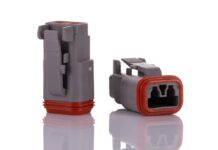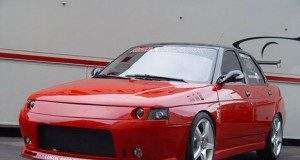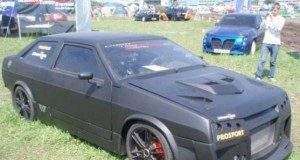The Ford Ranger remains Australia’s best-selling vehicle, and for good reason. Despite a growing number of competitors, the Ranger continues to dominate the ute segment, blending practicality with a level of refinement that few rivals can match. This review focuses on the 2026 Wildtrak 4×4 bi-turbo, a variant soon to disappear as Ford phases out the engine, making this a critical look at a soon-to-be-classic configuration.
Why the Ranger Still Matters
The Ranger’s success isn’t accidental. It strikes a sweet spot between rugged capability and everyday usability, making it equally at home on construction sites and suburban streets. With over 40,000 deliveries this year, it outsells even the popular Toyota HiLux, cementing its position as the top choice for Australian buyers. The Wildtrak, in particular, stands out as a well-rounded option, though its soon-to-be-discontinued engine adds a sense of urgency for potential buyers.
Pricing and Competition
The Wildtrak 4×4 bi-turbo starts at $69,890 before on-roads, a $250 increase from last year. This places it in direct competition with the Toyota HiLux Rogue ($71,530) and the Isuzu D-Max LS-U+ ($68,000). While the HiLux offers a more established reputation for reliability, the Ranger delivers a more refined driving experience. The Volkswagen Amarok, a reskinned Ranger, provides a more premium alternative, but at a comparable price point.
Inside the Wildtrak: Comfort and Tech
The Wildtrak’s interior feels more SUV-like than most utes, thanks to shared components with the Everest. Material quality is excellent, with a blend of durable plastics, leather accents, and subtle gunmetal-grey details. The 12.0-inch infotainment touchscreen (standard on Wildtrak) is responsive and intuitive, with wireless smartphone mirroring and a customizable interface.
The cabin is practical, with ample storage options, including cupholders, a two-tier glovebox, and a central cubby with wireless charging. Rear passengers get decent legroom, though taller occupants may feel cramped. The tub features a powered rolling tonneau cover and a 400W power socket, adding to its utility.
Under the Hood: The Bi-Turbo Diesel
The Wildtrak is powered by a 2.0-liter four-cylinder bi-turbo diesel engine, producing 154kW and 500Nm. While not as powerful as the V6 option, it delivers more than enough grunt for most tasks. The engine is responsive and efficient, though it lacks the full-time four-wheel drive found in some competitors.
Ford claims 7.6L/100km, but real-world fuel economy is closer to 8-9L/100km. The 10-speed automatic transmission shifts smoothly but can feel overly eager at times.
On the Road: Comfort and Capability
The Ranger Wildtrak strikes a balance between comfort and capability. The suspension absorbs bumps well without sacrificing stability. The steering is well-weighted and provides decent feedback.
Off-road, the Ranger performs admirably, with a locking rear differential, hill descent control, and selectable four-wheel drive. However, the lack of full-time 4WD may limit its performance in challenging terrain.
The Verdict: A Workhorse with Refinement
The Ford Ranger Wildtrak remains a top pick in the ute segment, offering a compelling blend of practicality, comfort, and capability. While the bi-turbo engine is soon to be discontinued, it remains a strong performer. If you’re looking for a well-rounded ute that can handle both work and play, the Wildtrak is worth considering, especially before the engine disappears.
Key Takeaways:
- The Ranger Wildtrak delivers a refined driving experience for a ute.
- The bi-turbo engine is still capable, though soon to be discontinued.
- The Wildtrak strikes a balance between comfort, capability, and practicality.

























